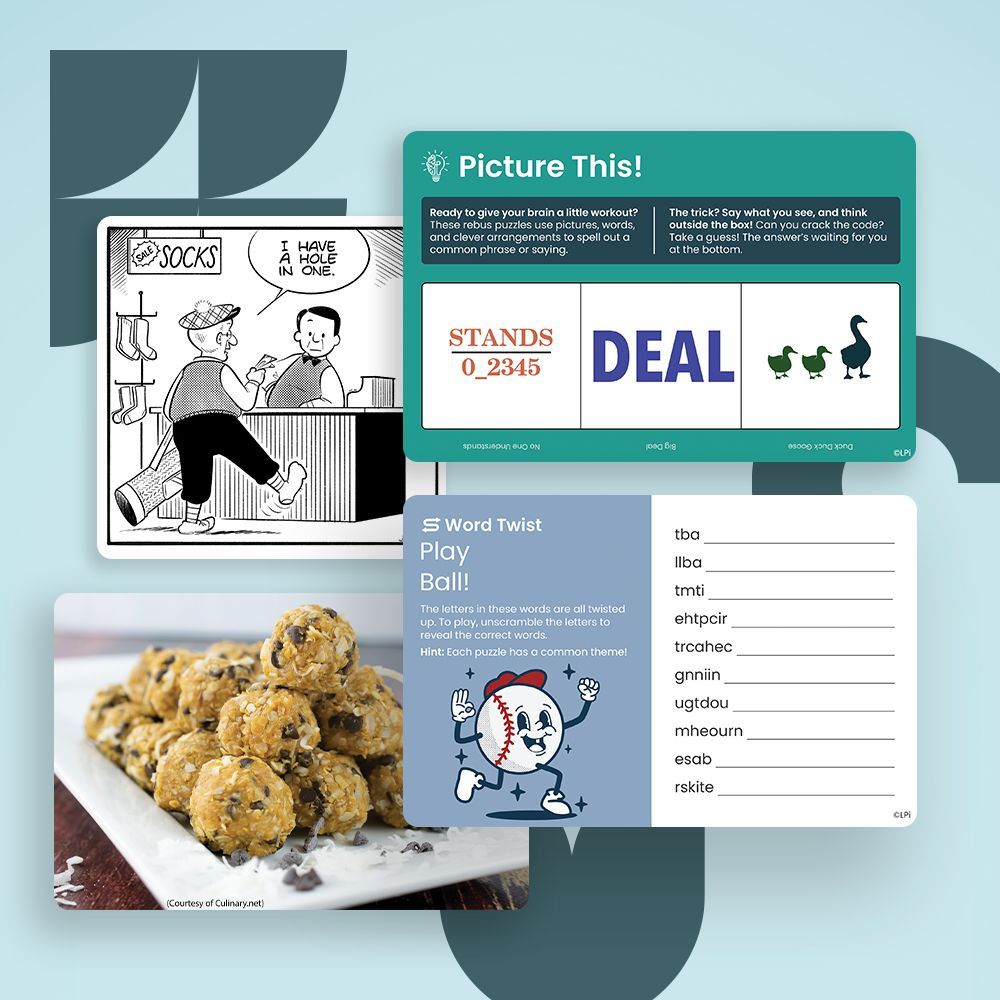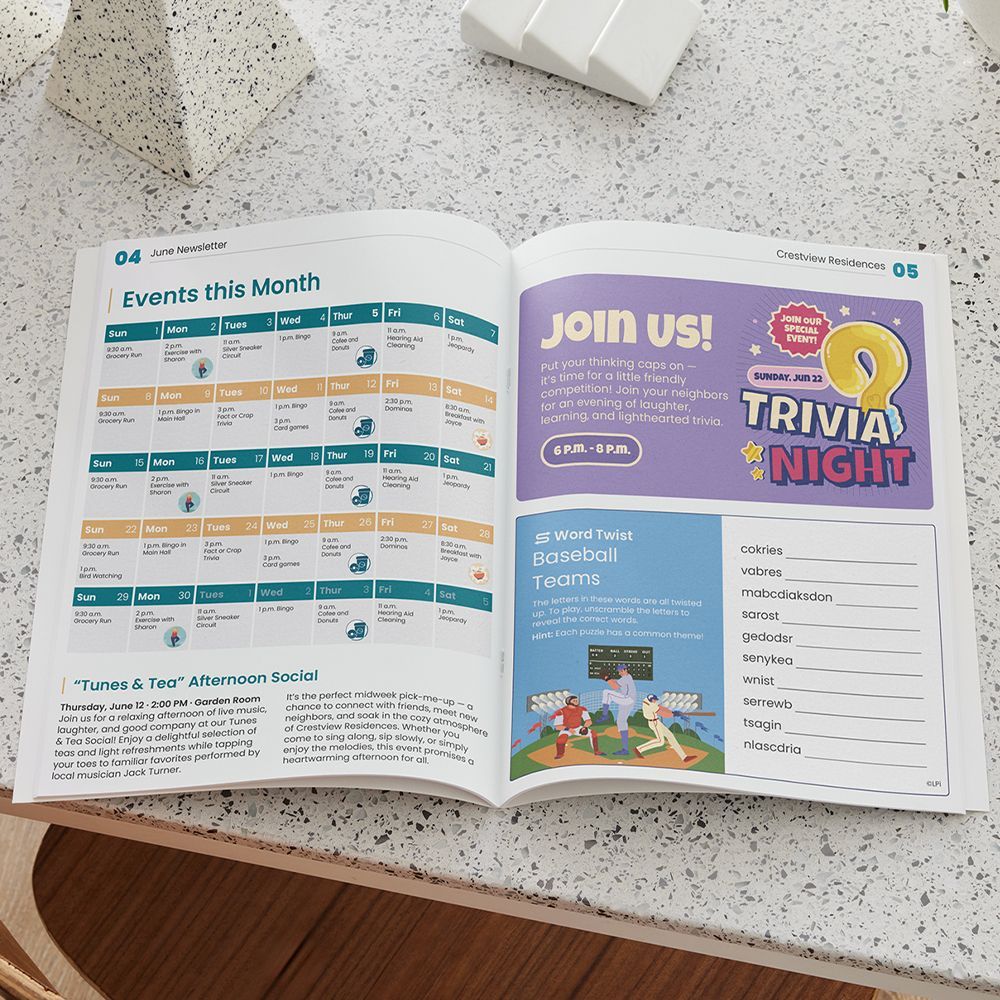Senior Center Newsletter Creation 101

In our last blog post, we shared some ideas on what to include in a senior center newsletter, from contact information to a director’s report, and current news. We hope it helped you think through the content you’ll likely want to create for each issue.
Today, we’re offering up some tips to make your newsletter reader friendly. By following these guidelines, you can ensure your publication isn’t turning readers off.
Dos and Don’ts for Creating a Newsletter Targeting Seniors
Here are our suggestions to help you attract and engage more readers for your senior-facing newsletter:
- Don’t: Use a font that is tough on aging eyes. Choose your font style and size thoughtfully. Sans serif fonts are usually the most readable because they are often larger in height and width. Examples to explore are Helvetica, Frutiger, Optima, and Futura.
- Don’t: Send out a poorly designed newsletter. Remember, this publication represents who you are to the community. While you likely don’t need an expensive designer, you do want to make sure it looks polished and professional. If design isn’t your strong suite, a brand new design or simply a refresh of your old design is included in our newsletter service! Let us get the design perfected for you so that you can focus on the content. See some before and after images of
newsletters we’ve worked on here!
- Do: Change your cover with every issue. While you may want to keep some things the same, such as a header with the newsletter title, mixing it up makes it easier for faithful readers to recognize when there is a new issue available. Remember, LPi has numerous cover art graphics designed for every occasion in
WeCreate, our library of content. They are ready to be used in your publication and for all of your communication needs.
- Do: Create a boilerplate with contact info. Displaying team members’ names and contact information in a prominent, consistent spot is always a good idea.
- Don’t: Make the copy too text heavy. Almost nothing puts readers off more than facing big blocks of copy that overwhelm the eye. Instead, break up text with images, subheads, and just plain white space.
- Do: Have consistent columns, such as a letter from the director and reports from various committees. Seeing regular updates like these helps people feel connected during times they can’t be there.
- Don’t: Use too many background colors. While a white background might not seem as exciting or visually appealing as bright colors, it’s easier for seniors to read. That’s especially true when you pair it with a font in a contrasting color, like black or dark blue.
- Do: Make quality content the priority for your senior center newsletter. While that might mean your publication needs to be smaller, it’s better than having a lot of poorly written copy. Don’t for get that LPi has hundreds of professionally written articles and recipes in WeCreate for you to use.
- Do: Enlist the services of proofreaders and editors. Once you publish your newsletter, it’s too late to correct grammar mistakes and typos. (And we’ve seen some that are downright embarrassing!) It’s always good to have a few extra people carefully review the newsletter before it goes out.
Our final tip is to investigate budget-friendly options for creating your own newsletter.
LPi, for example, has options for free ad supported newsletters that make it easy to engage your community. Visit our Print and Digital Newsletter page to download a brochure, watch a quick video, or see examples of successful newsletters that we print every day for nonprofits like yours across the country.
Want more newsletter inspiration? Visit the
"Newsletter Tools" section of our blog!
Updated 11-07-2025




